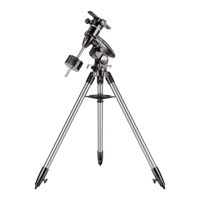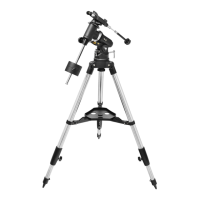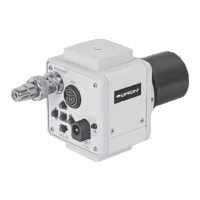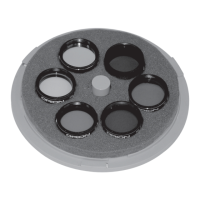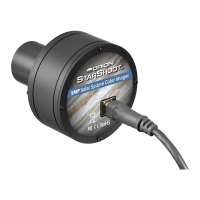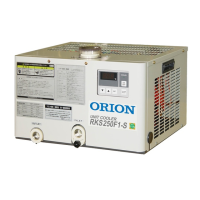8
The Moon
The Moon is one of the easiest and most interesting targets to photograph. With
its rocky, cratered surface there is a wealth of detail to be photographed with your
camera and SteadyPix Pro.You will be to take beautiful images of the whole Moon
or close-ups that showcase the craters, mountains, or maria. Single snapshots
work well and multiple shots can be digitally stacked later in a program such as
Registax to increase the signal-to-noise ratio and dynamic range of the image.
Also, you can take video and then stack a series of the sharpest individual video
frames. The Moon is a very large target, so at higher magnications you may only
get a part of the surface in each picture. Use eyepieces that provide low powers
(50x and below should work with most telescopes) if you wish to have the entire
surface of the Moon in your eld ofview.
Photographing the full Moon can be difficult since sunlight is falling directly
on the lunar surface, producing no shadows, so details will be harder to see.
Photographing the Moon when it is in one of its partial phases is preferable, as
the angle of the Sun causes shadows highlighting the surface relief. You might
also want to use an optional Moon lter that threads onto the bottom of the
eyepiece to bring out more subtle features on the lunar surface, even during a full
Moon.
The Sun
Photographing our nearest star, the Sun, is always interesting, but it must be
done with caution. You must use a properly tted solar lter covering the front
opening of the telescope, or serious, instantaneous eye damage could occur
with even a momentary glimpse of the Sun! The intense radiation emitted by
the Sun could also damage your camera. Furthermore, if the scope has a nder
scope attached, its lens should be covered with aluminum foil or a lens cap to
prevent damage to your eyes or to the nder scope itself from excessive heat
buildup.
With a proper solar lter installed on the telescope, you will be able to photograph
sunspots on the Sun’s surface and record their changing size, shapes, coloration,
and patterns over time.
If you have a tracking mount, be sure to set the tracking rate to “Solar” to keep the
Sun’s disk in the eyepiece eld of view.
The Bright Planets
Next to the Sun and the Moon, the planets Mars, Venus, Jupiter, and Saturn are
the brightest objects in the sky and make excellent targets for afocal photography
with the SteadyPix Pro. Keep in mind that the planets don’t stay still like the
stars, so to nd them you should refer to In the Sky This Month at our website
(OrionTelescopes.com), or to charts published monthly in Astronomy, Sky &
Telescope, or other astronomy magazines.
To get the right amount of detail on the planets, eyepieces that give high powers
(at least 75x or more) should be used when using the SteadyPix Pro. Low powers
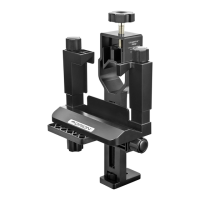
